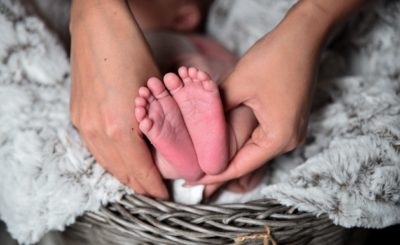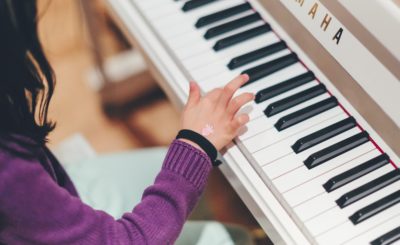Most hospitals and baby shops and websites will give you a list of things to buy for the baby. They tend to be huge overwhelming lists of things you might never have looked at or thought of or needed before. Realistically, many of the things on these lists are less of a “must have” than you might be led to believe. Additionally, there are things you will be given, and things you certainly don’t need yet. It’s worth pacing yourself and not getting too carried away until you have worked out what you as a family actually want and need.
You will need:
- A means of getting your new baby home. This is usually some kind of car seat.
- A means of getting out the house. A pram, a baby carrier/sling, or both.
- Somewhere for the baby to sleep. A bassinet or a cot are both normal for newborns. Please follow safe sleep advice.
- Something for the baby to wear. As a minimum, you’ll need 3 or 4 size (and weather) appropriate outfits to get started. “Newborn” sizing is called 0000 and generally fits babies up to 4kg. (The average baby is roughly 3-3.5kg at birth if at term.) 000 fits babies of 0-3 months and 4-6kg, all very approximately. Some newborns will fit these clothes from the start, and most will fit them reasonably soon after birth, but many will need a few 0000 outfits to get started.
- Nappies. Don’t worry about having thousands of nappies. Some babies need a particular fit or size, so if you have bought a job lot of one size you may find yourself with a great surplus of unsuitable nappies. Some seem better at “catching” and retaining particular things, and this seems to vary from baby to baby. Babies get through 8-12 nappies per day in the first few days, this often reduces a little as you both get more used to nappy changes. Some babies need a lot more than this. Buy a packet or two of newborn size nappies, and work out where more are sold nearby in case of rapid depletion of supply.
- Wipes. Get a couple of packets of 80-100 wipes. In time, you’ll be buying these by the case, but for now get a few packets in case the ones you pick don’t seem to be gentle on your baby’s bottom, or the lids don’t close well, or any other issue. The first few poos will take about 15 wipes each but this soon settles to 2-4 (depending on the mess…).
- Somewhere to change your baby’s nappy. Some parents use a towel on the floor or bed, but this comes with some risk to the carpet or bed. Some go to the other extreme and get a bells and whistles change table. We recommend at least an inexpensive changing mat (or 2 if your bedroom and living spaces are on different floors) and a designated changing area where nappies, wipes, changing equipment lives. It can be on a low coffee table or the floor. Certainly as they grow and become capable of wriggling or walking away, you’ll end up changing them on the floor or a bed.
- Milk. Breast milk is the logical and healthy choice for most families. If you plan to breast feed, there isn’t much in the way of supplies that you will need. (See below for Mum supplies.) It’s worth being aware of alternatives. Some parents feel reassured knowing that there is a tin of formula and a bottle and teat (for all of these just pick one which is suitable for newborns) in the cupboard, while others feel this is a pressure to revert to bottles. Some babies or Mums just can’t achieve exclusive breastfeeding in the first few days or weeks. If you don’t want to have a tin and bottle in the cupboard, at least check where you can get hold of them locally and after hours. We aren’t pressuring you to bottle feed at all, we strongly advocate breastfeeding, but we also advocate feeding, by whatever means necessary to make sure your baby has adequate fluid and nutrition. See this article for advice on how to clean and sterilise infant bottles. If you plan to bottle feed your baby, make sure you have some newborn formula, several bottles and teats, a bottle brush and a method of sterilising your equipment. And read the instructions in advance.
- A way of cleaning your baby. Babies don’t usually need “products” for washing, water is enough. Some parents confidently shower with their baby, but many prefer bathing. There are designated baby baths, or the tried and tested big oval bucket (which by the way will fit your baby a lot longer than a baby bath). So long as you have clean and relatively soft flannels and towels, there’s no need to have “baby towels”.
What you don’t need right now:
- Piles of toys. Your baby is likely to be given a reasonable haul of toys over the next 12 months. Particularly soft toys. Believe it or not, their interests will start to show soon and you will become more aware of what they don’t have/what they might like as they grow. You’ll also find that using a small range of developmentally appropriate toys repeatedly will offer better learning than having a wide showcase of toys they barely play with before they’re ready for the next age group of toys.
- Lots of clothes. Again, many people will give these to you, but also you will become aware of what type of clothes you find easiest to use and put on. Some parents love zipped onesies, others only want buttons or studs, some prefer 2 piece and others love all in ones. Wait until you find what suits you before buying up a year’s worth of clothing.
- Fully furnished nursery. The baby will sleep in your room for the first 6-12 months. There’s no need to extensively furnish a room which will have quite different usage in a year. Focus on what you actually need now, although when buying baby items do try to think about whether they will be useful for more than a month or two.
- Equipment for solids. Wait until your baby is ready for solids! Focus on Mum’s nutrition for now.
- Nappy wipe warmers. Yes, that’s a thing. They just seem a step too far. And unless you also get some kind of portable version, there will be plenty of times your baby will have to tolerate a normal temperature wipe.




2 thoughts on “Things to buy (and things you don’t need) for a new baby”
Comments are closed.